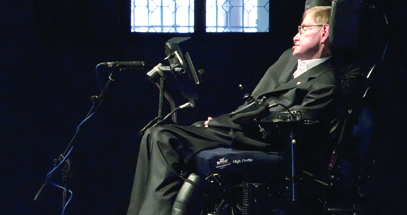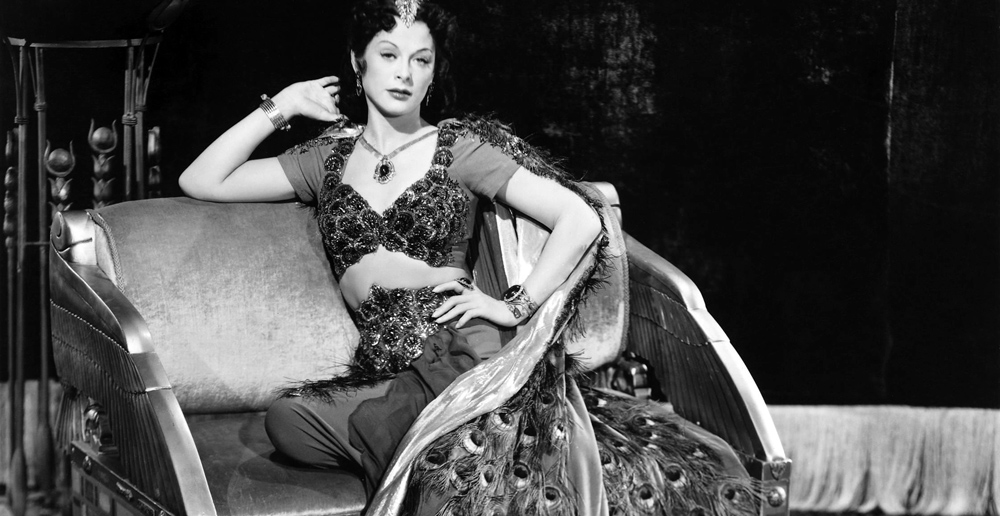Few people embody the idea of “the brain” – the mind, really – the way Stephen Hawking does.
The word “embody” is not used lightly here. Hawking’s thinking on the origins of the universe, the limits of time, the limitlessness of space, the radiation from black holes, the phenomena of parallel universes and the relationship of the theory of relativity to quantum mechanics leads us to utter his name in the same breath as Einstein’s. The very circumstance of that thinking – in a body increasingly wasted – has become a poignant metaphor for the complexity of the mind-body connection. Hawking’s illness – amyotrophic lateral sclerosis (ALS), a motor neuron disease – has trapped his body. But it’s also, in a sense, freed his mind.
That disconnect is the subject of a new movie, “The Theory of Everything” (Nov. 7), which stars Eddie Redmayne as Hawking and is already generating Oscar buzz. That Hawking should be played by one of the most devastatingly attractive actors around – a man who has modeled for Burberry and was named to Vanity Fair’s International Best Dressed List in 2012 – is both ironic and fitting. (Not that Redmayne is any slouch in the brains and talent departments, with Eton, Cambridge and Tony and Olivier awards on his résumé.)
Still, think of all those absent-minded professors played by Cary Grant in glasses (“Bringing up Baby,” “Monkey Business”) or the elegant Greer Garson and Walter Pidgeon as radium-discovering scientists Marie and Pierre Curie in “Madame Curie.” Or the virile Russell Crowe as schizophrenic mathematician John Nash, using his mind to heal his mind, in “A Beautiful Mind.” The new film “The Imitation Game” (Nov. 21), about another mathematician, closeted World War II Enigma Code-breaker Alan Turing, stars incandescent Sherlock Holmes du jour Benedict Cumberbatch. (Perhaps not so coincidentally, he played Hawking in a 2004 film.) It’s as if Hollywood must assure its audience and its own insecure self that hey, nerds can be sexy, too.
And remind us in turn that it is in the business of illusion. Redmayne, after all, can contort his body, deliver a performance that’s drawing comparisons to Daniel Day-Lewis in “My Left Foot,” unwind that lanky frame and bound off to the Toronto International Film Festival in a natty turquoise suit. Hawking cannot. But then, he would say that from a scientific standpoint, reality is an illusion, too.
The reality is that the mind and the body cannot exist without one another. To be brain-dead is to be dead, in effect. But even the most willing of spirits will ultimately be done in by the flesh, which is weak.
When you read about Hawking’s life, what strikes you immediately is not just how intellectual it has been, but how physical as well. Though he came from a family that placed a high premium on education, Hawking was no classroom recluse but a funny, popular kid who liked to build model airplanes and boats, shoot off fireworks and play board games, all with his pals. At Oxford University, where he studied physics and chemistry, he was a daredevil coxswain, charting risky courses for the rowing team.
Even after he was diagnosed with ALS at Cambridge University at age 21, he didn’t slow down. He continued his doctorate work there and married his first wife, Jane Wilde, whose memoir “Travelling to Infinity: My Life With Stephen” is the backbone of the movie. They had three children – Robert, Lucy and Timothy – and despite other entanglements (she fell in love with organist Jonathan Hellyer Jones; he married and divorced one of his nurses, Elaine Mason) have remained close.
Once the fiercely independent Hawking accepted the use of a wheelchair, he became as reckless in his “driving” as he had been in coxing the Oxford rowing team. As his fame increased with the publication of his mass-market success, “A Brief History of Time” – which he wrote to supplement his income as the Lucasian professor of mathematics at Cambridge and director of research at its Centre for Theoretical Cosmology – he traveled, lectured, organized conferences and partied, with the aid of wives, nurses, assistants and a computerized voice (albeit with an American accent) that he and we have come to think of as distinctive. That voice coupled with the impish figure have proved to be an irresistible presence on everything from “Star Trek: The Next Generation” to “The Simpsons” to “The Big Bang Theory.”
You have to think, though, that he would not have become a cultural icon without a transcendent mind both spurring and defying a humbled body. At the same time, that body has liberated his mind. Not for him the mundane tasks that bedevil so many creative types. And yet, that kind of freedom has come at such a price.
Still…
In the film, a 21-year-old Hawking is given two years to live. He’s now 72.
“There should be no boundary to human endeavor,” he says in the movie. “However bad life may seem, where there is life, there is hope.”





